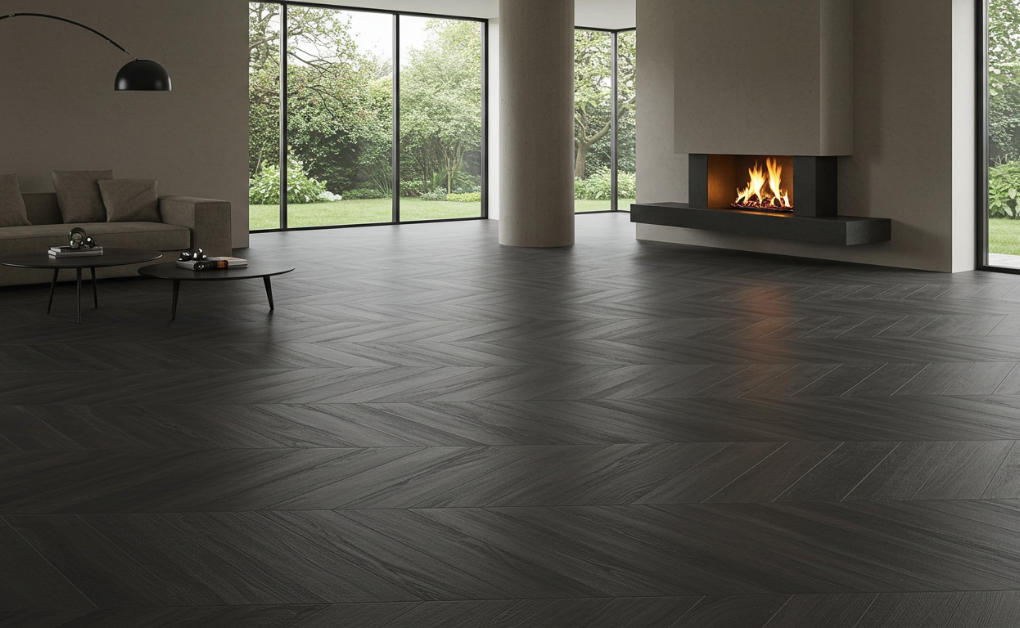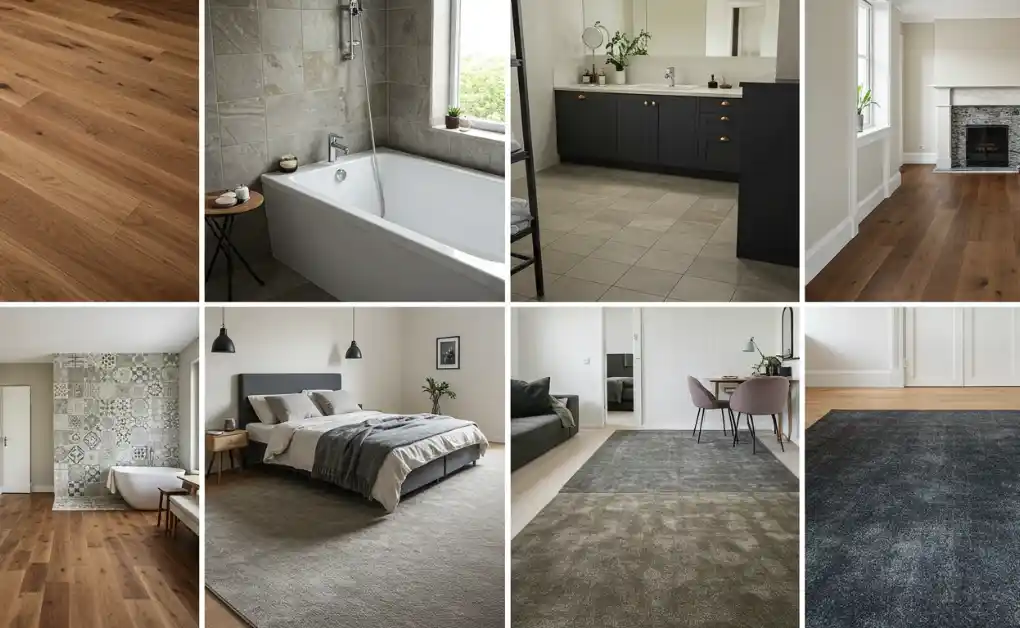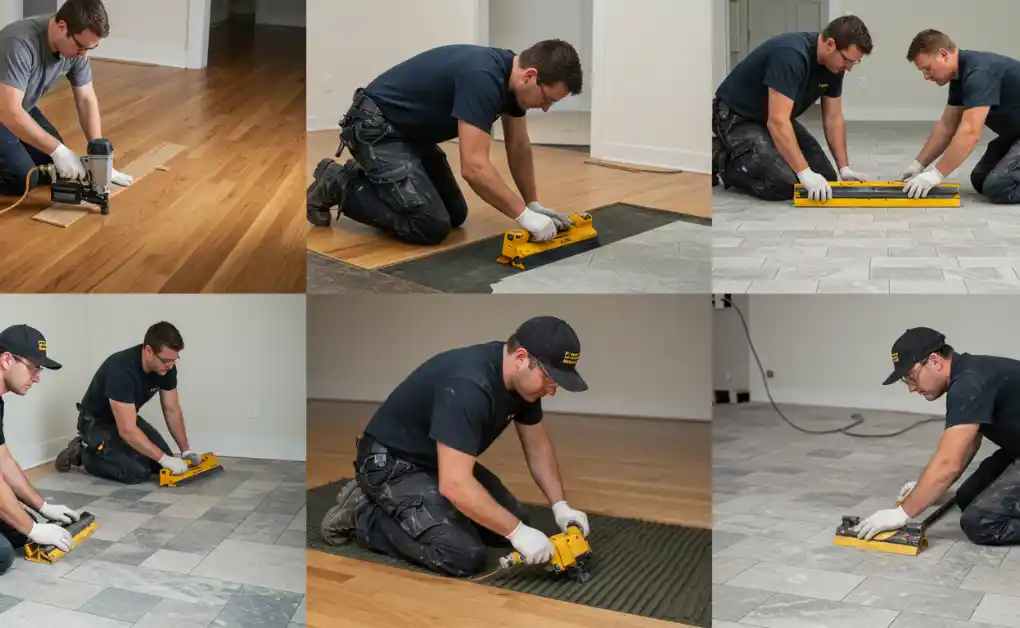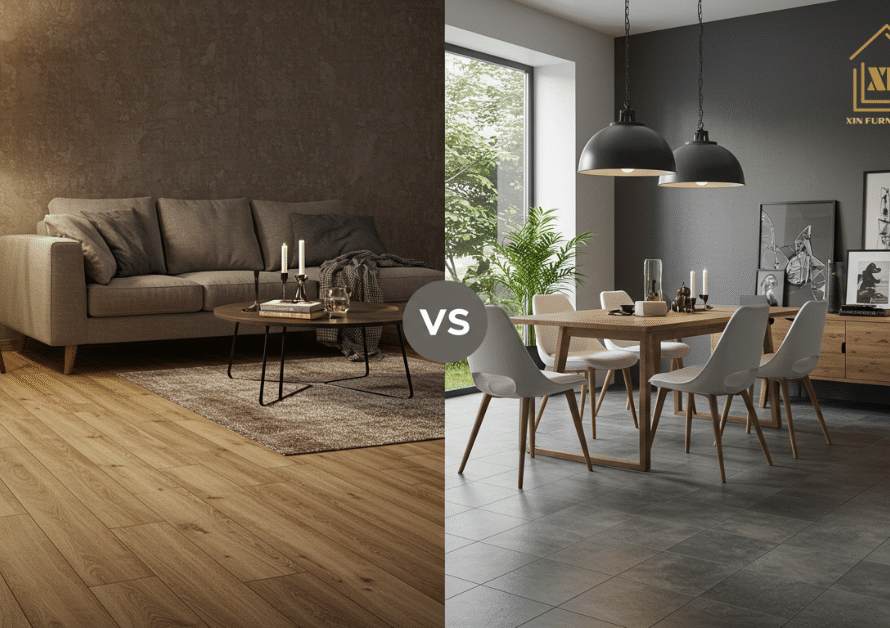Choosing the right flooring is one of the most important parts of designing a home. It’s not just about what looks good; your flooring affects comfort, maintenance, resale value, and the overall ambience of a room. The best choice depends on your space, your lifestyle, your budget, and even your long-term plans for the home.
Whether you’re building a new house, renovating an HDB, or upgrading your condo in Singapore, this guide on how to choose flooring for home will help you confidently decide which type works best for every room.
The Role of Flooring in Home Design
Your floor is the base of your entire interior. It works together with the walls and ceiling to define the room’s overall look and feel. A soft-toned vinyl plank floor can brighten up a compact space, while a rich hardwood or matte tile might add warmth and character.
When planning your home flooring design, consider how colours, patterns, and textures will match your furniture, wall colours, and lighting. Since flooring is not something you’ll change often, choose wisely, not just for looks, but also for durability and function.
To help you make the right choice, here are a few key steps to guide you through the flooring selection process based on your home’s needs and style. Let’s break it down step by step to help you make the best choice.

Step 1: Consider the Room and Foot Traffic
Different rooms have different needs. Start by thinking about how each space is used:
- Wet areas like kitchens, bathrooms, and laundry rooms need non-porous flooring options that can resist water and spills. Vinyl, tiles, or SPC flooring are good choices here.
- Dry areas, such as bedrooms or living rooms, allow for more flexibility. You can choose from a variety of options, including carpet, hardwood, or laminate.
- Homes with kids or pets should avoid delicate floors. Scratch-resistant and low-maintenance flooring materials, such as vinyl or SPC, are ideal.
Knowing the traffic level of each room helps you choose something that can handle daily wear and tear.
Step 2: Understand the Types of Flooring and Their Costs
Choosing the right flooring isn’t just about looks; it’s also about practicality and budget. Here’s a simple breakdown of the most common types of flooring in Singapore, along with their average cost per square foot. This can help you compare options based on what suits your home and lifestyle best.

1. Vinyl Flooring
Cost Range: $3 – $6 per sq ft
Vinyl is one of the most popular choices in homes in Singapore. It’s affordable, waterproof, and easy to clean, making it perfect for both dry and wet areas like kitchens, bathrooms, and living rooms. You can choose from a wide range of designs, including wood vinyl flooring for a warm, natural look or stone vinyl flooring for a sleek, modern finish. To learn more, you can read our complete blog, “What is Vinyl Flooring?”
2. Laminate Flooring
Cost Range: $3 – $7 per sq ft
Laminate flooring gives you the look of hardwood at a lower price. It’s great for bedrooms and hallways, but since it’s not fully waterproof, it may not be ideal for areas prone to moisture, such as kitchens or bathrooms.
3. Tile Flooring
Cost Range: $5 – $10 per sq ft
Tiles are durable, non-porous, and water-resistant, making them a go-to for bathrooms and kitchens. They’re easy to maintain, but can feel cold underfoot. You can choose from ceramic, porcelain, or even patterned tiles depending on your style.
4. Hardwood Flooring
Cost Range: $12 – $25 per sq ft
Hardwood adds warmth, value, and natural beauty to any space. It’s best suited for living rooms or bedrooms but requires more care and isn’t ideal for humid or wet environments. It’s one of the higher-end options in terms of cost and maintenance.
5. Carpet Flooring
Cost Range: $4 – $8 per sq ft
Soft and comfortable, carpet works well in bedrooms and cosy corners. However, it requires regular vacuuming and may not be suitable for people with allergies. It’s not water-resistant, so avoid using it in areas with damp conditions.
6. Concrete Flooring
Cost Range: $5 – $8 per sq ft
Concrete flooring is modern, minimal, and highly durable. It’s a good fit for industrial-style interiors or high-traffic zones. While it’s low maintenance, it may feel stiff or cold unless paired with rugs or soft finishes.
Each flooring type offers a unique balance of style, function, and cost. Consider how each room is used, the amount of foot traffic it receives, and the design you’re aiming for. This will help you pick flooring that not only looks good, but also lasts longer.
Step 3: Think About Maintenance and Durability
Before choosing any flooring, ask yourself how much effort you’re willing to put into cleaning and upkeep.
- Vinyl, SPC, and tile floors are easy to maintain and long-lasting.
- Hardwood needs regular polishing.
- Carpets must be vacuumed frequently and professionally cleaned on a regular basis.
If you’re looking for low-maintenance options, non-porous flooring options like vinyl or SPC will save you time and effort.
Step 4: Match the Flooring with Your Interior Design
Your flooring plays a big role in setting the tone of your space. It should not only look good on its own but also work well with your overall home interior. Here are a few things to think about:
- Light vs. Dark Shades: Light-coloured floors can make small rooms feel bigger and more open, while darker shades create a warm, cosy atmosphere.
- Style of the Home: Choose flooring that fits the theme of your home, modern, traditional, rustic, or minimalist. For example, wood-look vinyl or laminate suits a rustic or classic style, while plain tiles or polished concrete complement modern interiors.
- Finish and Texture: Choose between a glossy and matte finish. Glossy floors reflect more light but can show scratches more easily, while matte finishes feel softer and are better for hiding daily wear.
Bring home a few flooring samples. View them under both natural sunlight and indoor lighting at different times of day. This helps you understand how the colours and textures will look in your space. A well-chosen home flooring design brings balance to your rooms and seamlessly connects the entire interior look.
Step 5: Installation Type and Timeline
Some floors are easier to install than others:
- Vinyl flooring can often be installed quickly with minimal mess.
- Tiles or hardwood may need more time and professional tools.
- For DIY homeowners, click-lock laminate or vinyl planks can be an easy project.
Always ask your supplier or contractor about how long the installation will take and what kind of prep work is involved. This will help you plan your renovation schedule better.

Step 6: Think Long-Term
Your floor should look good for years, not just now.
- Resale Value: Hardwood and quality vinyl can increase your home’s value.
- Repairs and Replacements: Vinyl plank and tile flooring allow easy replacements if damaged, unlike large sheets or glued-down flooring.
Picking a long-lasting, low-maintenance option will save you time and trouble in the future.
Conclusion
Choosing the right flooring takes more than just picking a style you like. It’s about how it feels under your feet, how it fits your daily life, and how well it performs over time. By taking it step by step, room use, budget, material type, and maintenance, you’ll make a decision that not only looks good but also works for your home.
We offer various types of Vinyl flooring in Singapore, allowing customers to choose between styles and durability options, including SPC, vinyl, and hardwood.
As a trusted Vinyl Flooring supplier in Singapore, we guide you in finding the perfect flooring for your home. With a wide range of designs and trusted installation services, we make the process simple and stress-free. Whether you’re looking for something stylish, waterproof, pet-friendly, or low-maintenance, our experts are here to guide you toward the perfect floor for your home.
FAQS
Q1. What is the most durable type of flooring for homes with kids or pets?
Vinyl and SPC flooring are highly durable and resistant to scratches. They’re also waterproof, making them a safe and smart option for families.
Q2. Which flooring is best for wet areas like kitchens or bathrooms?
Non-porous flooring options, such as vinyl, SPC, or ceramic tiles, are ideal because they resist moisture, stains, and mould.
Q3. Is hardwood flooring suitable for homes in Singapore?
While hardwood may look elegant, it may not be ideal in Singapore’s humid climate unless it is properly sealed and protected. Engineered wood or vinyl that mimics wood can be a better option.
Q4. What are the easiest flooring materials to maintain?
Vinyl, SPC, and tiles are the easiest to clean and maintain. They don’t require polishing and are resistant to stains and water.
Q5. Can I install the flooring myself?
Some options, like click-lock vinyl or laminate plank, are DIY-friendly. However, tiles and hardwood usually need professional installation to ensure a long-lasting result.


